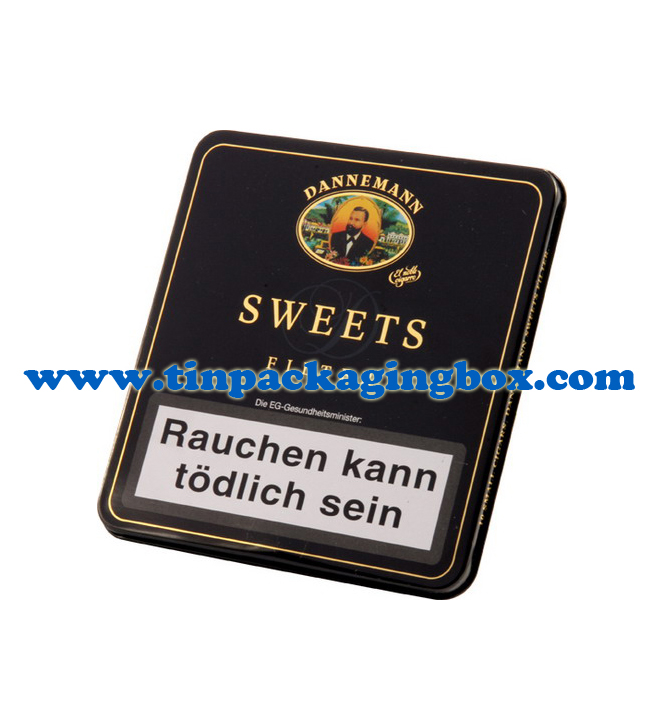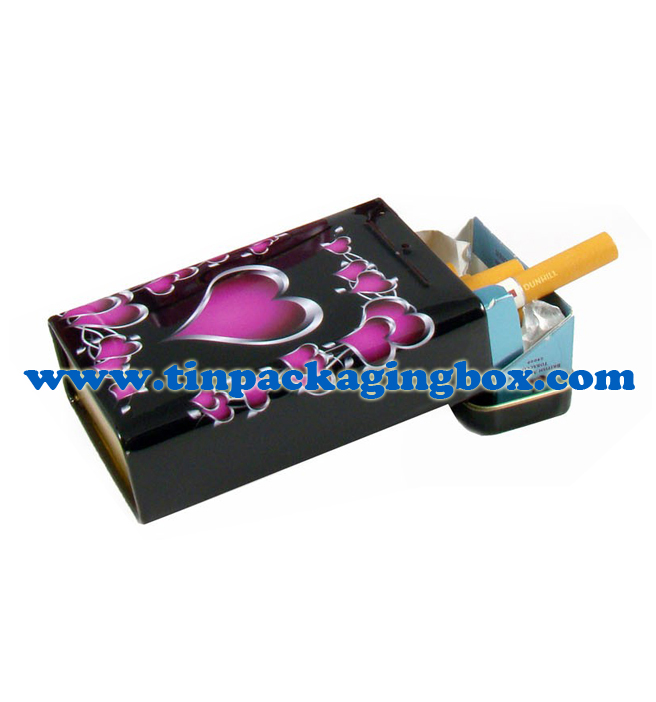
Step 1: Understand the Requirements
Before diving into the design process, it’s crucial to understand the specific requirements for the cigarette tin case. Consider factors such as:
Capacity: Determine the number of cigarettes the tin case will hold. Standard cases typically accommodate 10, 20, or 25 cigarettes.
Dimensions: Based on the capacity, define the external and internal dimensions of the tin case. A standard cigarette is approximately 84 mm in length and 8 mm in diameter. Allow for a few millimeters of extra space for ease of access and movement.
Material: Decide on the type of tinplate material. High-quality, food-grade tinplate with a thickness of 0.23 mm to 0.30 mm is commonly used to ensure durability and safety.
Step 2: Design the Shape and Structure
The shape and structure of the cigarette tin case play a significant role in its functionality and appeal.
Shape: Choose between a rectangular, square, or custom shape. Rectangular cases are most common due to their simplicity and ease of stacking.
Lid Design: Decide on the type of lid – hinged, slip-on, or snap-on. Hinged lids are popular for their convenience, while slip-on lids offer a sleek look.
Compartments: Consider including internal compartments or dividers to keep cigarettes organized and prevent them from getting crushed.
Step 3: Focus on Aesthetics
The visual appeal of the cigarette tin case is essential for attracting customers and enhancing the product’s marketability.
Finishes and Coatings: Opt for a variety of finishes such as glossy, matte, or metallic. Protective coatings can also be applied to prevent rust and enhance durability.
Color and Printing: Choose colors and designs that resonate with your brand identity. Advanced printing techniques such as offset printing can achieve high-quality, vibrant graphics. Ensure the design is aligned with the brand's image and appeals to the target audience.
Branding: Include the company logo, brand name, and any other relevant information. Embossing or debossing techniques can add a tactile element to the design, making it more attractive.
Step 4: Ensure Functionality and Usability
A cigarette tin case must be user-friendly and functional to meet the needs of the consumers.
Ease of Use: Ensure the lid opens and closes smoothly without requiring excessive force. A secure yet easy-to-open lid enhances user experience.
Portability: The case should be lightweight and compact enough to fit comfortably in a pocket or bag. Typically, a cigarette tin case should weigh between 50 to 100 grams.
Durability: Select a material that is resistant to dents and corrosion. High-quality tinplate with a thickness of around 0.25 mm provides a good balance of strength and weight.
Step 5: Consider Environmental Impact
Sustainability is becoming increasingly important in product design.
Recyclability: Ensure the materials used are recyclable. Tinplate is an excellent choice as it is 100% recyclable and can be reused without loss of quality.
Eco-Friendly Coatings: Use environmentally friendly coatings and inks that do not contain harmful chemicals.
Step 6: Prototyping and Testing
Before mass production, create prototypes to test the design’s functionality and aesthetics.
Prototyping: Develop a few prototypes based on the initial design. Evaluate the look, feel, and usability of the prototypes.
Testing: Conduct rigorous testing to check for durability, ease of use, and overall quality. Gather feedback from potential users and make necessary adjustments.
Step 7: Mass Production and Quality Control
Once the design is finalized, move on to mass production while ensuring strict quality control measures.
Production: Utilize advanced manufacturing techniques to produce the tin cases efficiently. High-precision stamping and cutting processes are essential for maintaining consistency.
Quality Control: Implement a robust quality control process to inspect each batch for defects. Ensure that the cases meet all specified requirements and standards.

Designing a cigarette tin case requires careful consideration of various factors, from material selection and structural design to aesthetics and functionality. Whether for branding, functionality, or sustainability, each design element plays a crucial role in delivering a product that meets and exceeds customer expectations.
Tags: ultrathin cigar tin case , custom printing tin cigarette case
